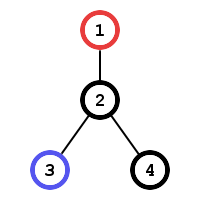居然水了一天时间才做完这套题。。。
Pasha is participating in a contest on one well-known website. This time he wants to win the contest and will do anything to get to the first place!
This contest consists of n problems, and Pasha solves ith problem in ai time units (his solutions are always correct). At any moment of time he can be thinking about a solution to only one of the problems (that is, he cannot be solving two problems at the same time). The time Pasha spends to send his solutions is negligible. Pasha can send any number of solutions at the same moment.
Unfortunately, there are too many participants, and the website is not always working. Pasha received the information that the website will be working only during m time periods, jth period is represented by its starting moment lj and ending moment rj. Of course, Pasha can send his solution only when the website is working. In other words, Pasha can send his solution at some moment T iff there exists a period x such that lx ≤ T ≤ rx.
Pasha wants to know his best possible result. We need to tell him the minimal moment of time by which he is able to have solutions to all problems submitted, if he acts optimally, or say that it's impossible no matter how Pasha solves the problems.
The first line contains one integer n (1 ≤ n ≤ 1000) — the number of problems. The second line contains n integers ai (1 ≤ ai ≤ 105) — the time Pasha needs to solve ith problem.
The third line contains one integer m (0 ≤ m ≤ 1000) — the number of periods of time when the website is working. Next m lines represent these periods. jth line contains two numbers lj and rj (1 ≤ lj < rj ≤ 105) — the starting and the ending moment of jth period.
It is guaranteed that the periods are not intersecting and are given in chronological order, so for every j > 1 the condition lj > rj - 1 is met.
If Pasha can solve and submit all the problems before the end of the contest, print the minimal moment of time by which he can have all the solutions submitted.
Otherwise print "-1" (without brackets).
2
3 4
2
1 4
7 9
7
1
5
1
1 4
-1
1
5
1
1 5
5
In the first example Pasha can act like this: he solves the second problem in 4 units of time and sends it immediately. Then he spends 3 time units to solve the first problem and sends it 7 time units after the contest starts, because at this moment the website starts working again.
In the second example Pasha invents the solution only after the website stops working for the last time.
In the third example Pasha sends the solution exactly at the end of the first period.
显然就是做完之后第一个能交的时间点
1 #include <iostream> 2 #include <cstdlib> 3 #include <cstdio> 4 #include <algorithm> 5 #include <string> 6 #include <cstring> 7 #include <cmath> 8 #include <map> 9 #include <stack> 10 #include <set> 11 #include <vector> 12 #include <queue> 13 #include <time.h> 14 #define eps 1e-7 15 #define INF 0x3f3f3f3f 16 #define MOD 1000000007 17 #define rep0(j,n) for(int j=0;j<n;++j) 18 #define rep1(j,n) for(int j=1;j<=n;++j) 19 #define pb push_back 20 #define set0(n) memset(n,0,sizeof(n)) 21 #define ll long long 22 #define ull unsigned long long 23 #define iter(i,v) for(edge *i=head[v];i;i=i->nxt) 24 #define max(a,b) (a>b?a:b) 25 #define min(a,b) (a<b?a:b) 26 #define print_runtime printf("Running time:%.3lfs ",double(clock())/1000.0) 27 #define TO(j) printf(#j": %d ",j); 28 //#define OJ 29 using namespace std; 30 const int MAXINT = 100010; 31 const int MAXNODE = 100010; 32 const int MAXEDGE = 2*MAXNODE; 33 char BUF,*buf; 34 int read(){ 35 char c=getchar();int f=1,x=0; 36 while(!isdigit(c)){if(c=='-') f=-1;c=getchar();} 37 while(isdigit(c)){x=x*10+c-'0';c=getchar();} 38 return f*x; 39 } 40 char get_ch(){ 41 char c=getchar(); 42 while(!isalpha(c)) c=getchar(); 43 return c; 44 } 45 //------------------- Head Files ----------------------// 46 47 int n,m; 48 void get_input(); 49 void work(); 50 int main() { 51 get_input(); 52 work(); 53 return 0; 54 } 55 void work(){ 56 57 } 58 void get_input(){ 59 int sum=0,l,r; 60 n=read(); 61 rep0(i,n) sum+=read(); 62 m=read(); 63 rep0(i,m){ 64 l=read();r=read(); 65 if(sum<=r) { 66 printf("%d ",max(l,sum)); 67 return ; 68 } 69 } 70 printf("-1 "); 71 }

